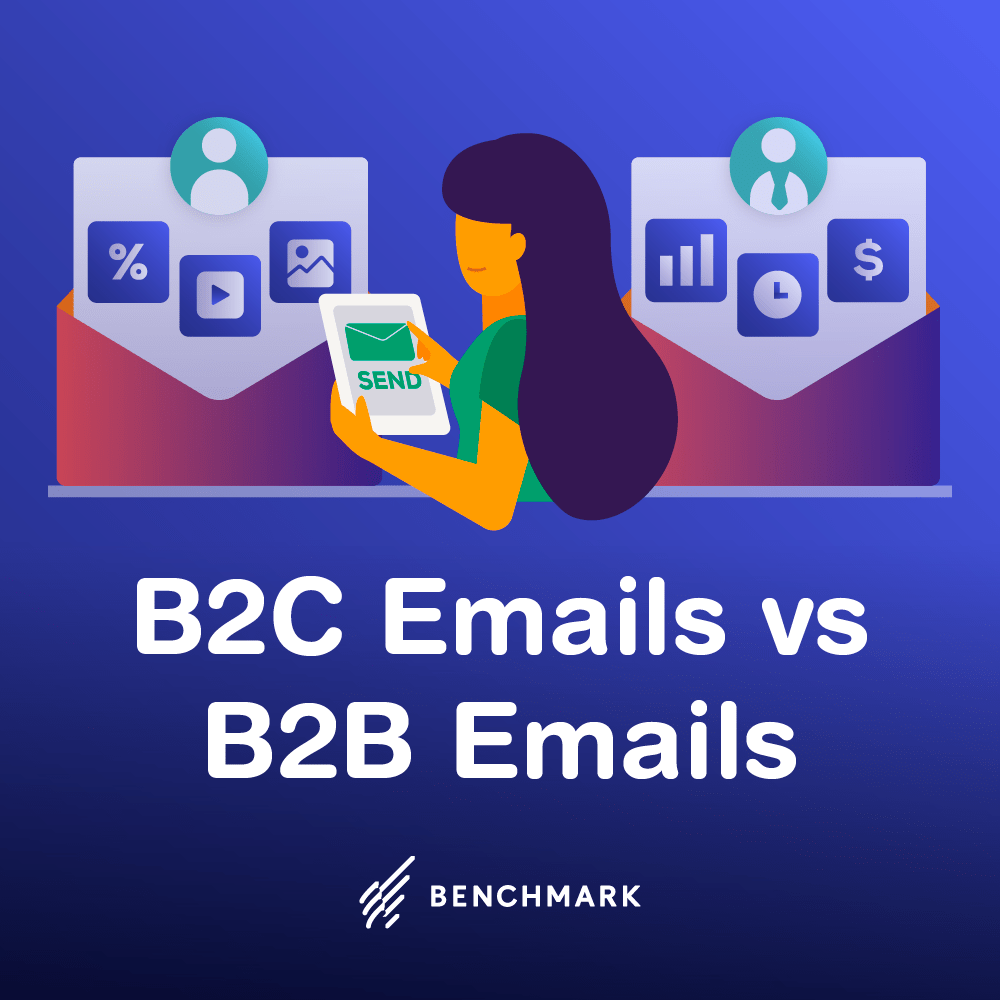Knowing your audience is everything when it comes to marketing. You need to know exactly who you’re trying to reach — and more specifically, their interests, needs, and pain points — to make a productive impact.
Correctly identifying your audience is one of the biggest obstacles in email marketing. This goes double when you’re working out the differences between sending a B2C email and a B2B email. When it comes to speaking to consumers vs. businesses, you have to understand what motivates each audience and their behavior so that your emails can be more effective. Here’s where to start.
Business-to-Consumer (B2C) Emails
Think about the last email that you received from your favorite online retailer. Chances are it included a special promotion of some kind — and there’s a reason for that. Consumers respond well to promotional emails that let them know how they can save money on things they already love. And this value-driven purpose is at the heart of all B2C emails.
Emotion plays a big part in consumer purchases, so your goal with a B2C email is to build an emotional connection, telling a story that inspires some sort of engagement. Images and videos work well for this purpose, as does the promotional content mentioned above. And don’t be afraid to be a little funnier and a little less buttoned-up with your tone. Consumers love brands that are entertaining and have a clear personality.
- The consumer buying cycle: Because their purchases are tied to emotions, the buying cycle tends to be much shorter for consumers than it is for businesses. When consumers know they want something, they don’t wait very long to purchase. And if there’s a special promotion, they know they have to act fast.
- When to send B2C emails: The best time to send out your B2B emails depends on the product or service that you’re selling — and, more importantly, your goal-based metrics. Don’t rely solely on outside reporting about success rates, since your results are mostly dependent on the behavior of your specific audience. Choose one day a week that you send your emails and test it out for a few months to see how it performs, then make tweaks as needed.
Don’t forget to maximize your use of email marketing over purchase-heavy periods like holidays. This is a great time to capitalize on consumer attention since your subscribers are already on the lookout for sales, discounts, and special deals. This gives you an opportunity to be a bit more aggressive with your approach and to email more frequently. It also lends a sense of urgency, which correlates well to the short consumer buying cycle.
Business-to-Business (B2B) Emails
Everyone loves saving money, but businesses are particularly concerned with cost efficiency and their bottom line. Business buyers need to know that whatever they’re being sent or sold on is something that will (a) do something they can’t do, (b) make their lives easier, and (c) help generate revenue in the long term.
Your tone should be more professional than it is for a B2C email, but don’t neglect language that shows your brand’s personality. Business decisions are made by people for people — by inserting some wit and creativity into your B2B messaging, you help break down barriers and make your brand more approachable.
- The business buying cycle: A business’s buying cycle is a lot longer than that of a consumer. Because there are more budget approvals needed and necessary parties to sign off on new initiatives, a business buyer needs to be as educated as possible on a product or service and thoroughly convinced themselves before they make a purchase. Their emails need to contain more content and more information than consumer emails so that they feel confident suggesting your solution to their team.
- When to send B2B emails: Again, sending emails on specific days just comes down to what works best for your audience, so test out a few different days and see what happens. Make sure with your B2B emails that you aren’t sending a ton of messages in a short period. Too much frequency tends to irritate business subscribers and may make them feel pressured into buying something they aren’t ready to buy yet. Spread out your emails so that you’re sending valuable information at a frequency that works with your audiences’ already hectic schedule. This works better with the longer sales cycle, allowing you to stay top of mind while your readers consider their options.
Getting the Most Out of Your Emails
B2B or B2C, the best way to optimize the outcomes of your emails is to create great content that meets your audience where they’re at. By starting with a basic understanding of exactly who you’re creating content for, you give yourself a leg up in nailing the messaging.
